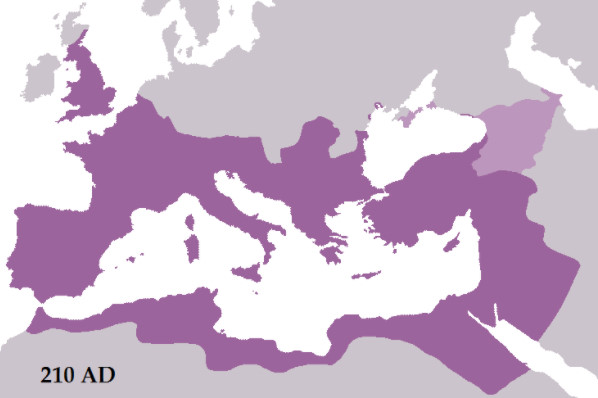Once the Romans captured Carthage, they expanded their control over the whole North African coast. Even Egypt became Roman. Civil war broke out in Rome in 44 BCE when the Roman Senate assassinated the Roman general Julius Caesar. His nephew, Gaius Octavian, ended the civil war when defeated another Roman general, Marc Antony, and his Egyptian wife, Cleopatra VII, in 31 BCE. Marc Antony and Cleopatra committed suicide. Octavian declared himself emperor, and became ruler of Rome and Egypt. He even called himself a new name – Augustus. Now emperors, not elected representatives, would rule the Roman Empire.
Emperors either inherited power through family, or seized power by force. For example, the second emperor, Tiberius (reigned 14 – 37 CE), was the son of Augustus’ third wife. He was part of the so-called Julio-Claudian dynasty. Emperor Nero (reigned 54 – 68 CE), was the fifth and final member of this dynasty. When he died, a brutal power struggle began. Four emperors in a single year proclaimed themselves ruler. Three were killed by their rival. Finally, a new dynasty emerged (68 – 96 CE), called the Flavian dynasty. It did not last very long. Politics in Rome was deadly.
A century later, there was another crisis. This time five men claimed themselves emperor in a single year! Once again, there was murder. Finally, a new dynasty began, called the Severan dynasty. The first member was Septimius Severus. He ruled from 193 – 211 CE. He was from Leptis Magna, a Carthaginian-turned-Roman colony in modern-day Libya. For the next 42 years, the Roman Empire was ruled by emperors of African descent.
Septimius Severus
Septimius Severusmade the Roman Empire the biggest it ever was. It spanned over 5 million square kilometres from Britain in the north, to the Arabian peninsula in the south. Compared to modern nations, the Roman Empire would be seventh-largest, far larger than India. Roman territory was constantly attacked by different tribes. Severus worked hard to stop this. He attacked the Parthians, a powerful civilisation in modern-day Iran, as well as British tribes. His most significant military successes were against African tribes. They allowed him to re-fortify the Empire’s southern frontiers. He then began reconstructing and modernising the African provinces. Other emperors neglected that. This African emperor put Africa first.
Septimius Severus was succeeded by his two sons, Caracalla and Geta. Caracalla soon murdered Geta, and reigned alone. He granted citizenship to all free men in the Empire, and gave free women the same rights as Roman women. Until then, only Italians were Roman citizens. Women, unfortunately, never had the same rights as men. Also, Caracalla built huge public baths in Rome. They were constructed over 5 years and used up 1/24 of Rome’s water supply. The baths were heated and burned tend of tons of wood each day. They also had libraries and shops. These giant ruins are still standing.
After Caracalla’s death in 217 BCE, another African came to the throne – Macrinus. He had no relation to Caracalla. He was a soldier before he became ruler. Macrinus came from Caesarea, a city in the Roman province of Numidia (modern-day Cherchell, Algeria). He was quickly murdered by Caracalla’s aunt. She made Egalabalus, Caracalla’s cousin, emperor. He only lasted three years. Macrinus was married and divorced five times before he was murdered at the age of 18! His cousin, Severus Alexander, ruled afterwards. He lasted 13 years, yet he was also eventually murdered in 235 CE. This ended the Severan dynasty. Politics in Rome was deadly!

